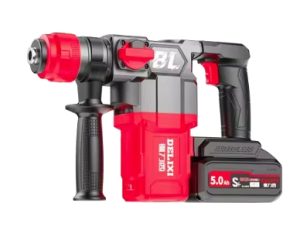Our Location
304 North Cardinal St.
Dorchester Center, MA 02124

What is the power type of cordless impact hammer?
Cordless impact hammers (also known as cordless hammers, cordless picks, etc.) usually refer to power tools that use batteries (such as lithium-ion batteries) as a power source instead of traditional wires to connect to the power source. Regarding its “power type”, this may actually refer to its power output or battery-powered characteristics, rather than a direct “power type” classification.
The following are several key points in terms of power and performance of cordless impact hammers:
Battery power: The battery capacity and type (such as lithium battery) used by the wireless impact hammer directly affects its continuous working ability and power output. The larger the battery capacity, the longer the working time is usually.
Output power: This is the actual mechanical power output of the tool, used to perform tasks such as drilling and hammering. The higher the power output, the better the tool performs when handling hard materials or doing heavy-duty work.
Motor type: Brushless motors are generally more efficient than brushed motors and generate less heat, allowing for higher power output and longer service life.

Impact frequency and force: For impact hammers, impact frequency (number of impacts per minute) and impact force (strength of each impact) are two key parameters, which together determine the efficiency and performance of the tool.
Voltage: Although this is not a direct “power type”, battery voltage (such as 18V, 20V, 36V, etc.) is an important indicator of tool performance. Higher voltage usually means higher power output.
In summary, the “power type” of wireless impact hammers is not a standard classification term. However, when considering its performance, attention should be paid to parameters such as its battery power, output power, motor type, impact frequency and force, and battery voltage. These parameters will jointly determine the performance and applicable scenarios of the tool.